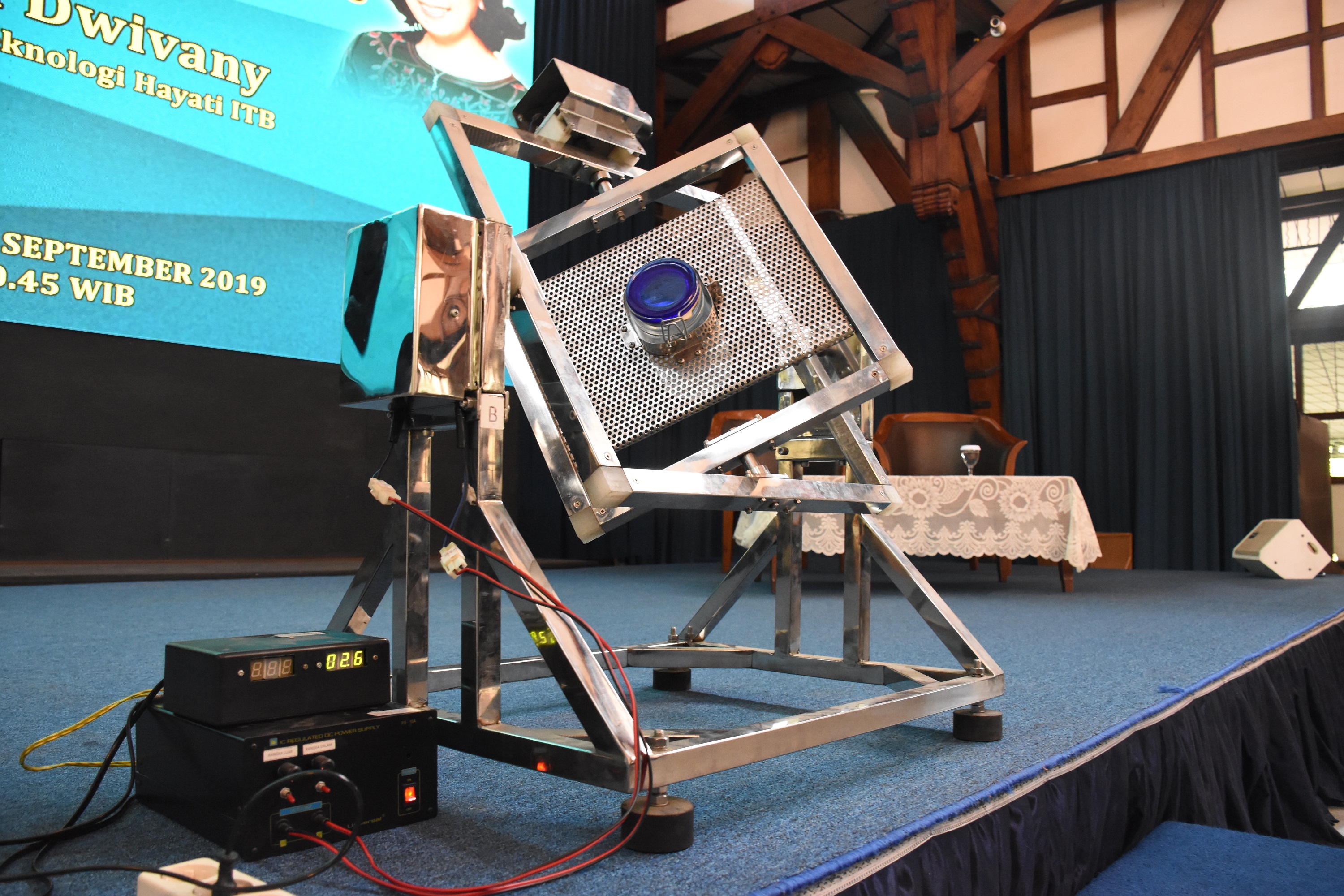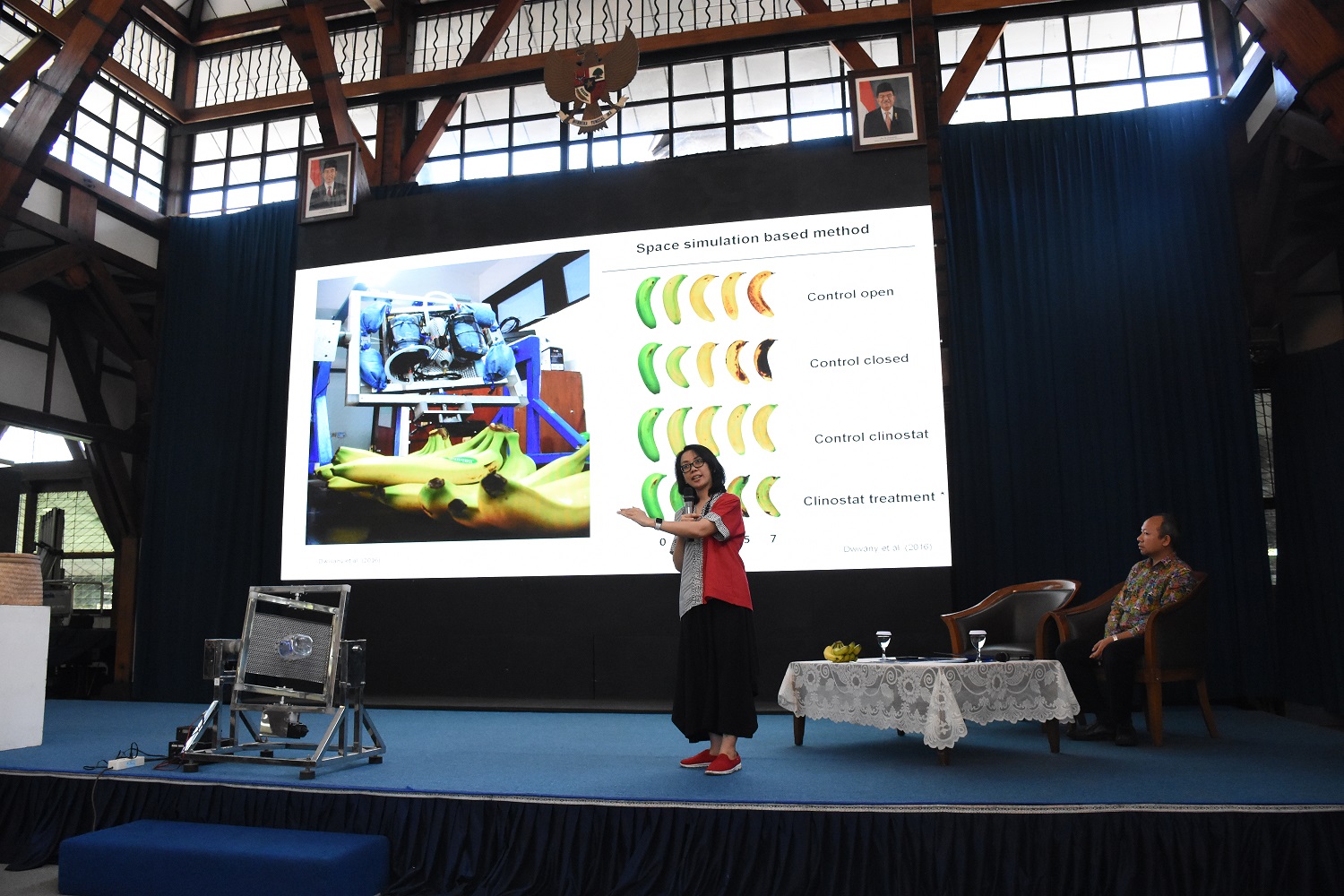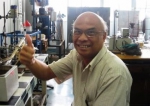An ITB Researcher Studies the Effect of Microgravity on Ripeness of Banana
By Adi Permana
Editor Adi Permana
 ?
?
?*Prototype of clinostat 3D. (Photo by: Adi Permana/Humas ITB)
BANDUNG, itb.ac.id – Ever imagine what will happen if bananas are sent to outer space? Will it ripe faster or slower due to low oxygen level and high carbon dioxide level?
Curiosity has led a lecturer in School of Life Sciences and Technology of ITB (SITH), Dr. Fenny M. Dwivany to conduct a study to discover the effect of microgravity simulation using 3D clinostat on Cavendish banana (musa acuminata AAA group) the ripening process. In cooperation with LAPAN and JAXA Japan, she observes physical changes, physiological changes, and analysis gene expression.
“The study was initially intended for preliminary study space biology experiments or to study the effect of microgravity simulation on fruit ripening. In addition to deepening the understanding on fruit ripening and decay, this experiment can also be applied to create better post-harvest technology,” said Fenny. The 3D clinostat prototype is the result of research cooperation with Physics Department of ITB and is the first in Indonesia.
Based on previous literature study, microgravity will affect the process of air exchange and cause unbalanced composition of CO2 and O2 on surrounding surface of plants or fruits.
“Our hypothesis states that fruits undergo delayed ripening process in outer space due to low oxygen level. In addition, microgravity is presumed to cause gas accumulation around the object or banana in this case,” she said.
These changes in composition can cause changes in metabolism on plants, for example biosynthesis of ethylene which is the substance that plays a role in fruit ripening process.
“In this research, bananas are placed in four different conditions, within closed storage, open storage, closed clinostat, and open clinostat.”
The experiment starts with ripe green Cavendish banana which is used as a sample after 24 hours of treatment using ethylene. The sample banana is wrapped in a tissue paper that contains active carbon to prevent physical injury and to absorb water resulted from respiration.
The experiment is then conducted using 3D clinostat for seven days and then the sample is harvested on 0, 1st, 4th, 5th, and 7th day.
*Dr. Fenny M. Dwivany as the speaker in Studium Generale KU-4078 at Aula Barat of ITB on Wednesday, 11 September 2019. During the public lecture, she introduced the prototype of 3D clinostat (Photo by: Adi Permana/PR of ITB)
Physical and physiological condition can be seen from the changes on skin color. The skin turns from green to yellow during seven days of ripening process. Fruit skin color in closed clinostat change only a few and take longer to ripe that other situation. The mass ratio of banana skin between those four conditions are measured to ensure this.
“The result, the longest ripe age is obtained when banana is stored in closed clinostat, followed by closed storage, open clinostat, and open container,” she explained.
This phenomenon is supported with data of chlorophyll content patterns of those four conditions. The lowest chlorophyll content is provided in enclosed container. This is related to limited oxygen around the fruit in closed clinostat. The color of banana skin change gradually from green to yellow during the ripening process due to degrading chlorophyll.
This experiment also involve molecular analysis to support the hypothesis that microgravity simulation using enclosed clinostat result in conditions that postpone banana ripening process.
Reporter: Salsabila Tantri Ayu (Chemistry 2016)


.jpg)
.jpg)
.jpg)
.jpg)
.png)

.jpg)

